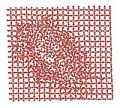Retailers and industry have tried to paint themselves green through the marketing of so-called “green” laundry detergents. The January 29 issue Chemical & Engineering News claims that this represents parties having “taken the leading role in a new effort by retailers and industry to market mainstream, environmentally friendly consumer products.”
The cleaning products industry has apparently embraced sustainability, with various innovations, including energy-efficient laundry detergents that work without hot water and other products that degrade once they go down the drain.
Report author Michael McCoy says that, “Wal-Mart Stores, Inc. has been a major catalyst in the green detergent revolution. Using its purchasing power as the world’s biggest retailer, Wal-Mart launched an environmental initiative last October to encourage its suppliers to manufacture more environmentally friendly laundry detergents. Laws and regulations in the United States and the European Union are giving industry additional regulatory incentive to go green with mainstream consumer products,” he adds.
A consideration that is missing from the notion that any laundry product can be “green” is the fact that even the most modern and efficient washing machines and dryers still use huge amounts of energy and vast amounts of water. There is nothing “green” about washing clothes, especially given the common western notion that one wear means an article of clothing is dirty and must be washed.
Now I’m not advocating a return to washboards, mangles, and a weekly bath in front of the hearth, but those in the developed world cannot possibly hope to be “green” as long as we’re using water and energy to wash and dry clothes. In many parts of the world (and coming to a town near you, any time soon) there are millions of people who live day to day with minimal water. An aboriginal Australian told me on a trip to the outback many years ago that he simply couldn’t understand why we’d waste water in such a way when it is such a precious commodity.
 Advocates of nuclear power point to recent advances in waste storage materials that could allow the radioactive byproducts of the nuclear industry to be stored safely and indefinitely in ceramics rather than glass. Whereas those not in favour of splitting atoms to produce almost limitless energy point out that even vitrified nuclear waste will represent an ongoing problem for thousands of years.
Advocates of nuclear power point to recent advances in waste storage materials that could allow the radioactive byproducts of the nuclear industry to be stored safely and indefinitely in ceramics rather than glass. Whereas those not in favour of splitting atoms to produce almost limitless energy point out that even vitrified nuclear waste will represent an ongoing problem for thousands of years. What’s the connection between Antarctic ice, old volcanic eruptions and global warming? US researchers think they know.
What’s the connection between Antarctic ice, old volcanic eruptions and global warming? US researchers think they know. A new type of radio frequency identification (RFID) sensor for gaseous molecules has been created based on a standard RFID tag coated with a chemically sensitive film at low cost. The use of multivariate analysis allows these new RFID sensors to be used to identify and quantify vapours important to industrial, in health, law enforcement, and of security applications.
A new type of radio frequency identification (RFID) sensor for gaseous molecules has been created based on a standard RFID tag coated with a chemically sensitive film at low cost. The use of multivariate analysis allows these new RFID sensors to be used to identify and quantify vapours important to industrial, in health, law enforcement, and of security applications.  The environmental costs of dealing with waste products from old electrical goods will have to be met by the device manufacturers in Europe from July 2007.
The environmental costs of dealing with waste products from old electrical goods will have to be met by the device manufacturers in Europe from July 2007. More than forty research papers highlight the effects of emerging contaminants on human health and the environment in the December 2006 issue of the journal Environmental Science & Technology, among their number are reports on nanoparticles, pharmaceuticals, disinfectant by-products, and fluorochemicals.
More than forty research papers highlight the effects of emerging contaminants on human health and the environment in the December 2006 issue of the journal Environmental Science & Technology, among their number are reports on nanoparticles, pharmaceuticals, disinfectant by-products, and fluorochemicals.